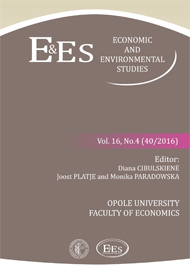Cultivation of microalgae (Chlorella vulgaris) in laboratory photobioreactor
Cultivation of microalgae (Chlorella vulgaris) in laboratory photobioreactor
Author(s): Łukasz Biłos, Agnieszka Patyna, Małgorzata Płaczek, Stanisław WitczakContributor(s): Monika Paradowska (Editor), Joost (Johannes) Platje (Editor), Diana Cibulskienė (Editor)
Subject(s): Economy, Energy and Environmental Studies
Published by: Uniwersytet Opolski
Keywords: algae cultivation; biomass productivity; Chlorella vulgaris; photobioreactor
Summary/Abstract: Algal cultivation fits in sustainable development of natural environment. Their biomass is increasingly regarded as a potential resource with a potential in production of biofuels, electricity and heat. Algae contain a lot of nutrients, so they can be used as food for humans and livestock. Because of their valuable composition (high nutrient content) they are used as supplements of balanced diet, in turn taking into account their biosorption ability they are used to detoxification of human body. Algae cultivation does not require large areas of land to expose cells to sunlight, so their production rate is higher compared to the vascular plants. Moreover, the cultivation in closed photobioreactors leads to high biomass concentration. However, this type of cultivation needs to be performed under strictly observed conditions, which can be evaluated by experiments. This study reports the results of a study involving the development of test stand in which high biomass productivity of Chlorella vulgaris can be achieved.This paper focuses on a study including Chlorella cultivation and the results of an experiment conducted in a laboratory photobioreactor.
Journal: Economic and Environmental Studies
- Issue Year: 16/2016
- Issue No: 4 (40)
- Page Range: 843-852
- Page Count: 10
- Language: English

